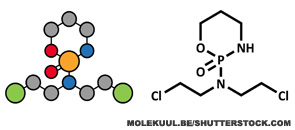Results of the NIH study of intravenous cyclophosphamide used in combination with steroids vs. steroids alone or cyclophosphamide alone, along with a pooled analysis of clinical trials examining the use of steroids combined with immunosuppressants, laid the groundwork for the use of cyclophosphamide combined with corticosteroids as the heretofore gold standard for the treatment of this disease.8
In their landmark New England Journal of Medicine paper, the NIH investigators also showed that the superior renal survival benefits of combination intravenous cyclophosphamide and steroids vs. steroids alone or with azathioprine were realized only after 10–12 years, underscoring that long-term trials may be required to ascertain an effective treatment for LN.
ELN
Alternative regimens to the NIH cyclophosphamide protocol were motivated by significant toxicities observed in all arms of that study, with mortality being greatest in the cyclophosphamide monotherapy group (7%). Over the last decade or so, induction regimens using mycophenolate mofetil (MMF) or the “European Lupus Nephritis Protocol” (ELN), in which patients receive six fortnightly doses of 500 mg of cyclophosphamide, have yielded induction remission rates comparable to the “gold standard” NIH protocol, with less infection, death and malignancy.9,10
In addition to the treatment options informed by these trials, further knowledge regarding the importance of ethnicity and race affecting treatment response has also emerged, adding to the complexity of management. To date, clinical trials of targeted biological therapies combined with steroids and background immunosuppressive therapy have not improved on this gold standard in short-term studies. Although the success of the recent induction/remission trials of mycophenolate mofetil (MMF) and the ELN protocol have improved patient/renal outcomes, relapse rates remain high. What are the possible explanations for recurrent disease, progression to ESRD, lack of cure? Let’s review a case example, which will be used to highlight the limitations of our understanding regarding the pathogenesis, diagnosis and treatment of this disease.

Case Study
A 35-year-old woman of Albanian descent undergoing a work-up for infertility was found to have hypothyroidism. Treatment with levothyroxine was initiated, but within a few weeks, she noted widespread joint pain and fatigue. She was referred to a rheumatologist, and laboratory tests demonstrated an ANA of 1:1,280 (speckled), ESR 48 mm/hour, anti-dsDNA 1,130, Ro 130, Smith 22, low complements (C3, 36; C4, 2). The complete blood count (CBC), creatinine, urinalysis and antiphospholipid screen were normal. On physical examination she had arthritis.
